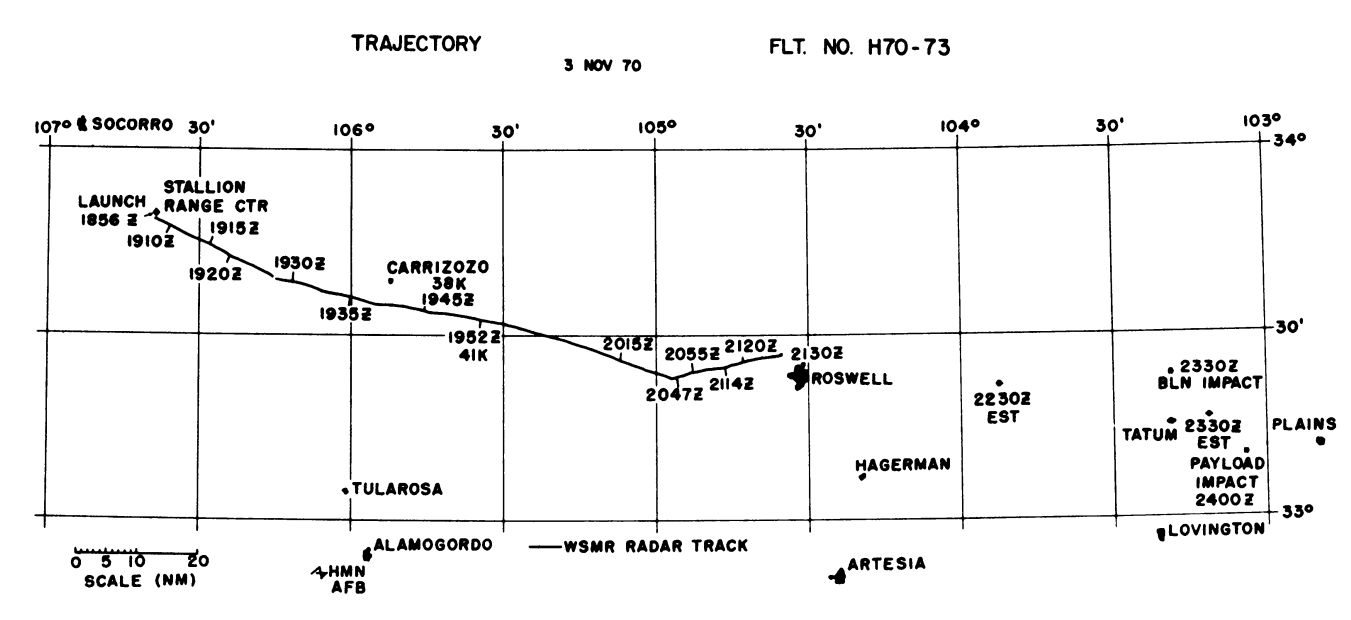Purpose of the flight and payload description
The objective of the flight was to measure the optical scattering properties of the atmosphere as a function of altitude, as well to acquire time-lapse photographs of aerosol layers using a polar nephelometer developed by the Air Force Cambridge Research Laboratories.
The primary experimental payload consisted of a xenon light source and five photometers mounted on a 3 meter-diameter octagonal gondola so as to measure the light scattering at 22°, 45°, 90°, 135°, and 157° from a defined volume of atmosphere.
Each photometer detected the scattered light at four selected visible wavelengths (4750 A, 5150 A, 6600 A, and 7450 A) sequentially via an indexing filter wheel. In addition, the polarization of the light was sensed at the 4750 A and the 7450 A wavelengths. The data output from each photometer was tape-recorded in flight.
Details of the balloon flight

Balloon launched on: 11/3/1970 at 11:55 mst
Launch site: White Sands Missile Range, New Mexico, US lanzado desde el Stallion Range Center
Balloon launched by: Air Force Cambridge Research Laboratories (AFCRL)
Balloon manufacturer/size/composition: Zero Pressure Balloon 2.000.000 cuft
Flight identification number: H70-73
End of flight (L for landing time, W for last contact, otherwise termination time): 11/3/1970
Balloon flight duration (F: time at float only, otherwise total flight time in d:days / h:hours or m:minutes - ): 4 h 22 m
Landing site: Near the New Mexico-Texas border, US
The flight provided new information on the angular volume scattering function of the atmosphere, from ground to better than 26 km. In addition, polarization and forward-to-backscatter ratios provided corroborative evidence of aerosol scattering in both the troposphere and stratosphere. At least four distinct dust layers in the stratosphere between 17 and 26 km were identified with average thickness of approximately 0.3 km. The results showed that the polarization is indeed a sensitive indicator of aerosol scattering and varies inversely with the turbidity. This parameter in conjunction with the absolute measurements of the volume scattering function provides the nephelometer with a self-consistent capability.
External references
- Atmospheric Optics Measurements With a Balloon-Borne Nephelometer Environmental Research Papers Nr. 371 (1971)
- In situ photometric observations of angular scattering from atmospheric aerosols Applied Optics Vol. 15, Issue 10, pp. 2520-2533 (1976)
6263If you consider this website interesting or useful, you can help me to keep it up and running with a small donation to cover the operational costs. Just the equivalent of the price of a cup of coffee helps a lot.

